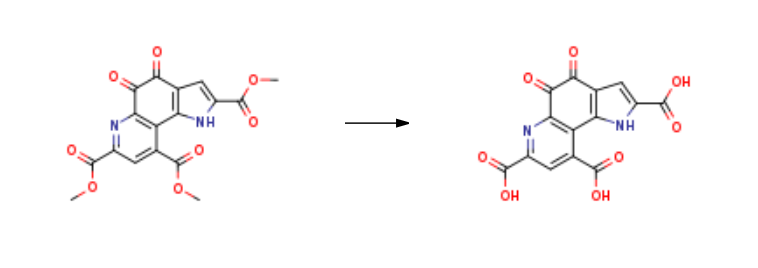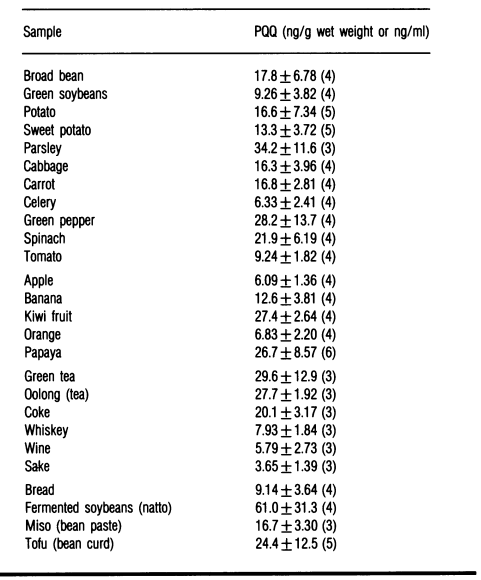Pyrroloquinoline quinone Chemische Eigenschaften,Einsatz,Produktion Methoden
S-S?tze Betriebsanweisung:
S22:Staub nicht einatmen.
S24/25:Berührung mit den Augen und der Haut vermeiden.
Beschreibung
Pyrroloquinoline quinone (PQQ) is a novel biofactor for which a proposition can be made for physiological importance. PQQ was first recognized as an enzyme cofactor in bacteria. It has recently been tentatively identified as a component of interstellar dust. Thus, PQQ may have been present throughout early biological conception and evolution. PQQ is also a potent plant growth factor. Consequently, for animals and humans, there has been constant exposure to PQQ. In animals, PQQ is reported to participate in a range of biological functions with apparent survival benefits (e.g., improved neonatal growth and reproductive performance). There are also benefits from PQQ supplementation related to cognitive, immune, and antioxidant functions, as well as protection from cardiac and neurological ischemic events. Although PQQ is not currently viewed as a vitamin, its involvement in cell signaling pathways, particularly those important to mitochondriogenesis in experimental animal models, may eventually provide a rationale for defining PQQ as vital to life. For humans, such evidence suggests there may be similar parallels or benefits from improving PQQ status.
Chemische Eigenschaften
Orange-Red Solid
Verwenden
Pyrroloquinoline quinone is an important growth factor for the body and a redox/cofactor found in a a class of enzymes called quinoproteins. It is a cofactor of microbial quinoprotein enzyme, and imidazopyrroline. it regulates the level of free radicals in the body, protects the body; anti-oxidative damage; enhances mitochondrial function; detoxification; disease, etc.
Application
Pyrroloquinoline quinone has been used:
as a component of nanocurcumin formulation (NCF), to study its therapeutic effect on ameliorate hypoxia-induced stress in hypertrophied cardiomyocytes.
as a standard in fluorescence analysis.
to test its efficiency in suppressing restrained oxidative stress and hepatic fibrogenesis in mouse models.
Pyrroloquinoline quinone(PQQ) has been reported to function as a water soluble vitamin/cofactor and as an antioxidant. PQQ disodium salt is proposed for use due to its nutritive value in the United States (U.S.) in foods, such as energy, sport, and isotonic drinks; non-milk based meal replacement beverages; water (bottled, enhanced, fortified); milk-based meal replacement beverages; cereal and granola bars; and energy, meal replacement, and fortified bars. PQQ is also intended for use in dietary supplements.
Allgemeine Beschreibung
Pyrroloquinoline Quinone (PQQ), also referred as methoxatin, is a water soluble orthoquinone molecule with redox-cycling ability.
Synthese
Pyrroloquinoline quinone is prepared by the reaction of
trimethyl 4,5-dihydro-4,5-dioxo-1H-pyrrolo[2,3-f]quinoline-2,7,9-tricarboxylate. The steps are as follows:
With sodium carbonate In water at 30℃; for 24h;
Or with water; potassium carbonate In water at 25 - 80℃; Green chemistry; Industrial scale.

Source
Pyrroloquinoline quinone (PQQ) is a compound commonly found in fruits, vegetables and certain bacteria. These include: tea, papaya, spinach, peppers, kiwi, parsley, celery, fermented soybeans or natto. The concentrations of PQQ in food are shown in the table below:

Pyrroloquinoline quinone Upstream-Materialien And Downstream Produkte
Upstream-Materialien
Downstream Produkte

